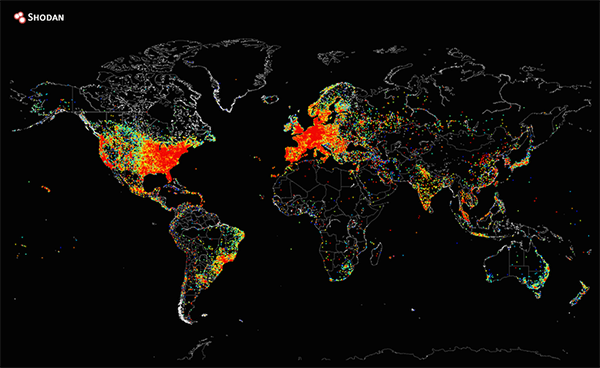Heartbleed è la falla che da due anni mina l'integrità dei dati sensibili archiviati da oltre due terzi dei siti web mondiali. La vulnerabilità minaccia tutti quei sistemi e servizi che si appoggiano a OpenSSL, colpendo le versioni dalla 1.0.1 alla 1.0.1f.
OpenSSL è una implementazione open source di SSL e TSL, i protocolli addetti alla sicurezza delle comunicazioni e transazioni su internet. Per gli utenti indicato con il lucchetto che compare di fianco agli indirizzi web sul vostro browser.
I motivi per disperarsi sono molti,
Heartbleed is a bug in OpenSSL’s implementation of a small part of the T.L.S. protocol, called the heartbeat extension. A "heartbeat," in this context, is like the "beep... beep…" of a hospital heart monitor: a quick way to check that the other end of a secure connection is still there. One side sends the other side a small piece of data, up to sixty-five kilobytes long, along with a number indicating the size of the data that has been sent. The other side is supposed to send back the exact same piece of data to confirm that the connection is still active. Unfortunately, in OpenSSL the replying side looks at the stated size of the data rather than at the actual size, and it always sends back the amount of data that the request asked for, no matter how much was sent. This means that if the stated amount of data is less than the amount actually provided, the response contains the data that was sent plus however much additional data, drawn from the contents of the computer's system memory, is required to match the amount requested.
Here is why this is so bad: the heartbeat response can contain up to sixty-four kilobytes of whatever data happens to be in the server's random access memory at the moment the request arrives. There is no way to predict what that memory will contain, but system memory routinely contains login names, passwords, secure certificates, and access tokens of all kinds. System memory is temporary: it is erased when a computer is shut down, and the data it holds is written and overwritten all the time. It is generally regarded as safe to load things like cryptographic keys or unencrypted passwords into system memory--indeed, there is little a computer can usefully do without temporarily storing pieces of sensitive data in its system memory. The Heartbleed bug allows an attacker to "bleed" out random drops of this memory simply by asking for it. Heartbeat requests aren't usually logged or monitored in any way, so an attack leaves no trace. It's not even possible to distinguish malicious heartbeat requests from authentic requests without close analysis. So an attacker can request new pieces of system memory over and over again; it's almost impossible for the victim to know they've been targeted, let alone to know what data might have been stolen.
Among the items that can be found in a server's system memory are the keys to cryptographically secured connections and the certificates that allow servers to prove they are what they claim to be. An attacker who steals cryptographic keys could use them to decode and read encrypted data that had previously been intercepted; an attacker who steals certificates could use them to mimic a secure site and to intercept communications. In other words, your browser could be tricked into thinking that it’s connected securely to your bank and instead be connected to an intermediary that can read all the data flowing back and forth.
Ma forse, se siamo fortunati, potrebbe risolversi solo con un gigantesco dopo sbornia per i sysadmin.
But before you panic, it is worth remembering that, at this point, we don't know how close we are to the worst-case scenario. It is possible, though improbable, that the security researchers who exposed this flaw were, in fact, the first people to find it, which would mean that it has only been known about, and exploited, for a few days. (It was found, independently, by a team of security researchers at Codenomicon and Neel Mehta, of Google Security.) At the same time the bug was announced, a new, secure version of OpenSSL was released, and updating most of the affected servers is a straightforward task. Major services like Google and Yahoo have already patched the vulnerability. Engineers did not need to stay up all night in a mad scramble to make repairs, but, as one system administrator told me, the nature of the bug made this something more than a routine update. "It's an update, a configuration change, and a notification to your users that there's no way to know if their data was stolen or not," he said. To be safe, identity certificates for servers and users must be revoked and then reissued. The fix, in other words, is both urgent and tedious, which is the worst kind of job for a programmer or system administrator.
La buona notizia è che la vulnerabilità è facilmente risolvibile.
LEGGI ALTRO...




